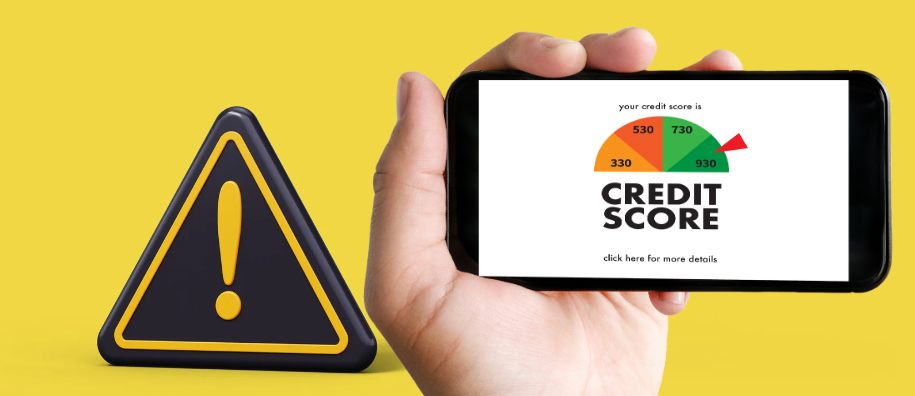
How to Read and Understand Your Credit Report
Introduction
Understanding your credit report is an essential part of managing your financial health. It’s not just about knowing your credit score; it's about comprehending the detailed information that shapes that score.
Credit reports can often seem complex with their various sections and terms, but don't worry—we're here to break it down for you. By learning how to effectively read and interpret this crucial document, you can take proactive steps to enhance your financial wellbeing and potentially increase your credit score.
Importance of Understanding Your Credit Report
Understanding your credit report is an essential aspect of financial literacy that can significantly impact various areas of your life. From determining your eligibility for loans to influencing the interest rates you receive, a credit report holds power in the world of finance. By mastering how to read this document, you become better equipped to manage your credit health actively and make informed decisions that lead to a stable financial future.
What is a credit report?
A credit report is a detailed summary of an individual's credit history, compiled by credit bureaus from various sources. It includes information about how you've managed loans, credit cards, and other lines of credit over the years. This report provides potential lenders a snapshot of your financial behavior, helping them to decide how risky it would be to lend you money.
Why is it important to understand your credit report?
Understanding your credit report is crucial for multiple reasons.
First, it allows you to verify its accuracy and ensure that all the information is up-to-date and correct. Errors on your credit report, such as incorrect account details or fraudulent activities, can negatively influence your credit score. And what happens if you have a poor credit score? Your loan application can be denied on set.
Additionally, having a thorough understanding of your credit report can help you better manage your finances, improve or maintain a good credit score, and make strategic decisions about applying for new credit. Essentially, it empowers you to take control of your financial health.

Components of a Credit Report
A credit report consists of several distinct sections, each containing specific types of information about your financial history. Familiarizing yourself with these sections can help you better understand how to read and interpret your credit report effectively.
Personal information
The personal information section of your credit report includes basic details about you, such as your name, address, Social Security number, and date of birth. It might also list your employment history. This section does not impact your credit score but is vital for verifying your identity and ensuring that the credit activities reported are indeed yours. It's crucial to check that all personal information is accurate and up to date, as discrepancies might indicate fraud or errors.
Account information
One of the most significant sections of the credit report is the account information. It lists all your credit accounts and includes details such as:
- The type of account (credit card, mortgage, auto loan, etc.)
- The date the account was opened
- The credit limit or loan amount
- The account balance
- Payment history
- The status of the account (open, closed, in collection)
This section is critical as it directly influences your credit score. Lenders use this information to assess your creditworthiness by looking at how reliably you pay your bills and manage your debt.
Public records
The public records section of your credit report. It includes entries such as bankruptcies, foreclosures, court judgments, and tax liens. Having public records on your credit report can significantly impact your credit score, often negatively. This section is essential to monitor because items listed can affect your ability to obtain credit for many years.
Credit inquiries
Lastly, the credit inquiries section records when a lender requests your credit report in response to an application for credit. There are two types of inquiries: hard and soft. Hard inquiries occur when you apply for a new credit, and they can affect your credit score if there are too many in a short period. Soft inquiries, such as when you check your own credit, do not affect your score. This section is crucial to watch because excessive hard inquiries might signal to lenders that you are taking on too much debt, potentially making you a riskier borrower.
By understanding each of these components, you are better placed to interpret your credit report accurately. This allows not only for improved monitoring and correction of any discrepancies but also enables proactive credit management and planning for future financial stability.
Understanding Credit Score

What is a credit score?
A credit score is a three-digit number that lenders use to evaluate the risk they take when they lend money. The score ranges from 300 to 850 and is based on information from your credit report, such as payment history, amounts owed, length of credit history, new credit, and types of credit used. Higher scores suggest to lenders that you are a less risky borrower, which might make it easier to obtain credit at favorable terms.
How is a credit score calculated?
Your credit score is calculated using a mathematical model that takes into account various elements from your credit report. The exact formula used can vary between different scoring models, but most focus on these key areas:
- Payment history (35%): The most significant component. It includes the record of your payments on credit cards, mortgages, and other loans, showing whether they were made on time.
- Amounts owed (30%): This looks at the total amount of credit and loans you're utilizing compared to your total credit limit, also known as your credit utilization ratio.
- Length of credit history (15%): Longer credit histories are generally seen as less risky because they demonstrate how you've managed credit over time.
- New credit (10%): This includes the number of credit accounts you've recently opened and the number of inquiries lenders have made for your credit report.
- Credit mix (10%): The types of credit you use, such as credit cards, installment loans, retail accounts, and mortgage loans.
Different scoring models might weigh these factors slightly differently, and there might be some additional minor factors, but this breakdown gives a good general overview.
Importance of a good credit score
Possessing a good credit score is pivotal as it affects several important areas of your life. Here are some benefits:
- Better loan and credit card approvals: Lenders and credit card issuers are more likely to approve applications from individuals with high credit scores.
- Lower interest rates: A higher credit score can qualify you for lower interest rates, which means borrowing costs you less over time.
- Better rental houses and apartments: Landlords might check your credit score to see if you are financially responsible before renting to you.
- Lower insurance premiums: Some insurance companies use information from your credit report to decide how much you'll pay for insurance.
- Utility services: You might get better terms on utilities with a good score and could skip paying a security deposit.
These perks demonstrate why it’s crucial to understand and aim for a good credit score.
Interpreting Your Credit Report

Analyzing account information
When you examine your credit report, focus on the 'Account Information' section, which details each credit account you have opened. Here’s what to look for:
- Account type and status: Understand whether the account is a revolving or installment account and whether it is open, closed, inactive, or in default.
- Credit limit and loan amount: It shows your credit limits or the total loan amount which helps to understand your credit utilization.
- Outstanding balance: Check how much you currently owe on each account.
- Payment history: Displays a list of your payments on each account and whether they were on time or late.
Analyzing these aspects helps you understand how each of your accounts is impacting your credit.
Identifying negative marks
Look for negative marks in your credit report, which can include late payments, collections, bankruptcies, and foreclosures. These entries can significantly impact your credit score. Note how long each derogatory mark will stay on your report—most remain for seven years, although some bankruptcies can last up to 10 years. Knowing what's there helps you plan for improvements.
Checking for errors
Finally, carefully review every line of your credit report for errors. Common mistakes can include incorrect personal information, accounts listed that do not belong to you, duplicate entries of the same account, and outdated information. If you find any discrepancies, you can dispute them with the credit bureau to have them corrected. Regular checks ensure that your credit report accurately reflects your credit history, which is crucial for maintaining a good credit score.
Tips for Improving Your Credit Health
Understanding your credit report is one thing, but improving your credit health takes active participation. Here are practical steps to help you enhance your financial wellbeing.
Paying bills on time
One of the most straightforward and effective methods to boost your credit score is to ensure you pay all your bills on time. Late payments can have a significantly negative impact on your credit score. Setting up automatic payments can be a lifesaver, especially for recurring bills like utilities, credit cards, and loans. Alternatively, setting reminders a few days before the due dates can help you keep track. Even payments that are a few days late can be recorded as delinquent, so it’s vital to stay ahead of your schedule. Remember, payment history accounts for about 35% of your credit score calculation, making it the most critical factor.
Keeping credit utilization low
Credit utilization – the ratio of your credit card balances to your credit limits – plays a critical role in your credit score. Financial experts recommend keeping your utilization below 30%, but lower is always better. For example:
- If your credit limit is $10,000, try to maintain a balance lower than $3,000.
- Pay down balances before the statement closing date so that the lower balance is reported to the credit bureaus.
Maintaining low credit utilization signals to lenders that you are not overly dependent on credit and can manage your finances responsibly. This strategy doesn’t just help improve your credit score; it also keeps your debt levels manageable.
Monitoring your credit report regularly
Regularly checking your credit report does more than just keep you informed about your financial status; it also helps in spotting any inaccuracies or signs of identity theft early. You are entitled to a free credit report from each of the three major credit bureaus (Equifax, Experian, and TransUnion) every year, which you can obtain through AnnualCreditReport.com.
Going through your credit report every four months (rotating between the bureaus) ensures you have a regular insight into your financial health. Look for inconsistencies such as accounts you did not open, late payments you did not make, or incorrect credit limits. If you find any errors, dispute them immediately with the appropriate credit bureau. Knowing where you stand and managing your credit actively can help ensure a healthier financial future.
Conclusion
Understanding your credit report is a fundamental step towards financial empowerment.
By familiarizing yourself with the details of your credit report, you not only safeguard your financial health but also pave the way for improved credit opportunities.
Remember, regular reviews ensure you can promptly address any discrepancies and optimize your credit score. Keep this guide handy, and with each review, you’ll find yourself becoming more confident and knowledgeable about managing your credit's impact on your financial future. Embrace this wisdom, and watch your financial opportunities expand.
